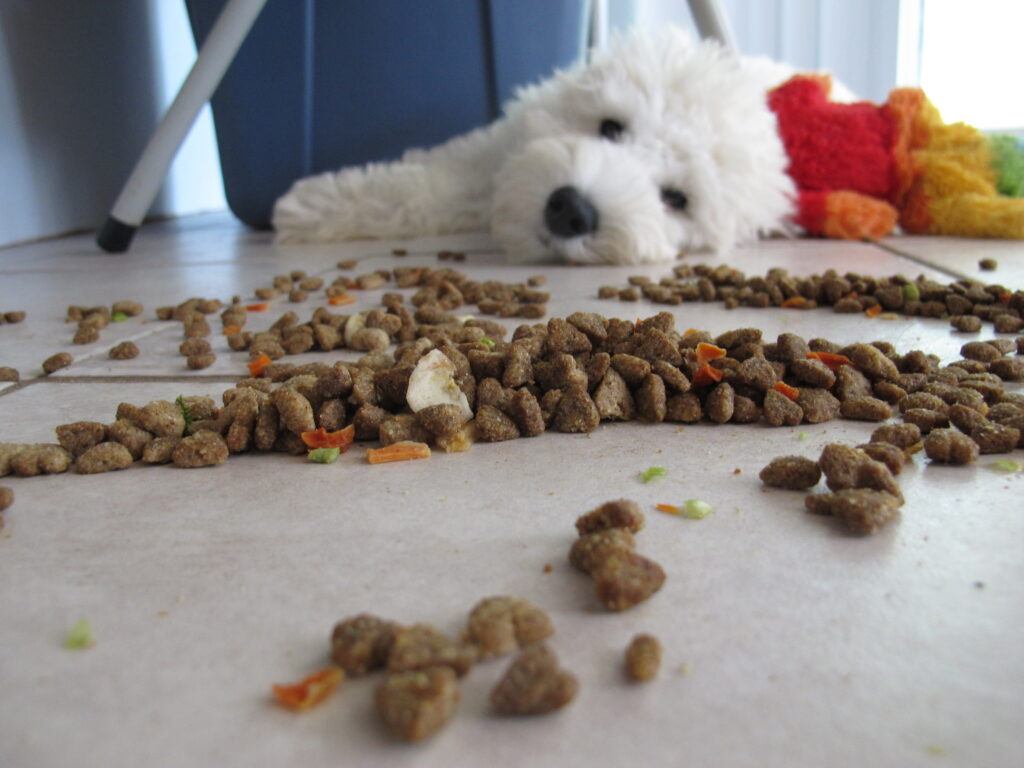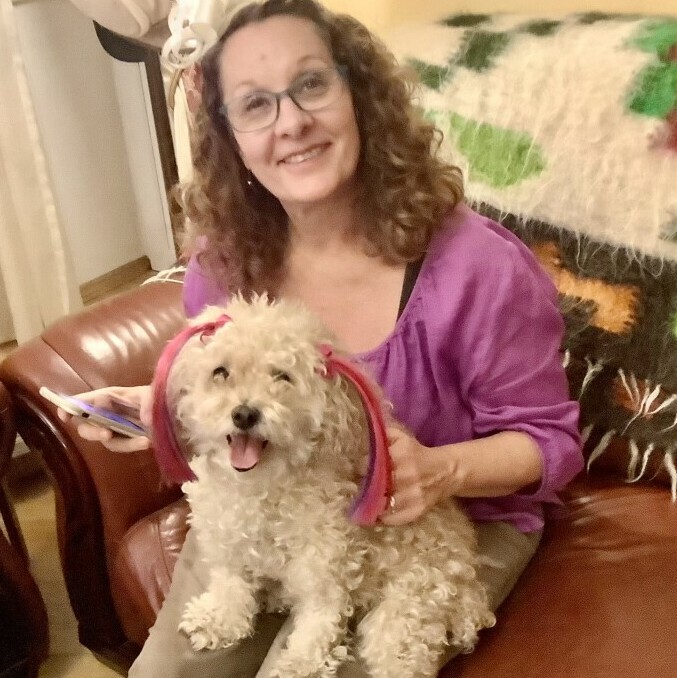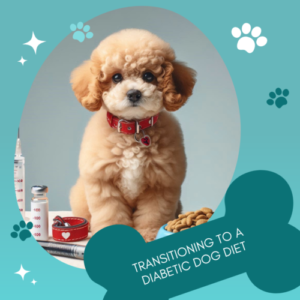
If you’re reading this, chances are you’re facing the challenge of adjusting to your dog’s diabetes diagnosis. Managing diabetes properly isn’t just about giving them insulin, it’s also about providing diet and exercise that maintains their blood sugar levels. The right nutrition is paramount for diabetic dogs, not unlike humans dealing with the same condition. The good news is, that once you’ve made the transition, managing your dog’s diet is simple. Feed them the same portions at the same time every day and life is easy.
Why? and What is in a Diabetic Dog Diet?
A diet formulated for a diabetic dog’s needs can significantly improve their quality of life. It reduces the fluctuation of blood sugar levels, minimizes the risk of diabetes-related complications, and maintains their energy level. Diabetic dogs often need a diet low in fats and sugars but high in fiber to slow down glucose absorption. Diet and exercise need to be adjusted to maintain a healthy weight. Your vet is your ally in this. They will help craft a feeding plan that’s not only nutritionally balanced but also takes into account your dog’s age, weight, activity level, and insulin therapy.
It is worth going to the trouble of getting the nutrition right. It’s been 3 years since Brady’s diagnosis and he is healthy and strong. His diabetes and chronic pancreatitis make him vulnerable, but in every other way, he is healthy and living a happy life. Being vigilant about consistency is giving us more time with our sweet Brady.
Making the Switch to a Diabetic Dog Diet
Transitioning to a new diet is not something you want to do overnight. Instead, introduce the changes gradually, ensuring your dog adapts without unnecessary stress.
Brady’s diabetes was a result of a serious episode of pancreatitis that left him with chronic pancreatitis and a few weeks later he was diagnosed with diabetes as well. When he came home from the hospital we immediately started him on his prescription low-fat diet. This was not the ideal way to start a new diet. Hopefully, your situation is less dramatic.
It’s best to take a step-by-step process to shift your diabetic dog to their new, restricted dietary regimen. Start by mixing a small amount of the diabetic diet with their current food, slowly increasing the proportion of the new food over a week or more. Pay close attention to how your dog reacts, both in terms of appetite and blood sugar levels.
Balancing your dog’s insulin and food intake is crucial during this period. Insulin dosages may need to be adjusted as their diet changes. It’s important to work closely with your vet to monitor your dog’s health and ensure the dosage is aligned with their current eating habits. Even though we were not making a gradual transition, we were still adjusting his insulin. I learned how to get a good glucose curve at home and Brady learned to relax and tolerate the tests.
Overcoming Resistance to a Diabetic Dog Diet

Consistency and patience are your best friends during this shift. Your dog needs time to adjust to the taste and texture of their new diet. Keep the feeding schedule consistent, and don’t be discouraged if progress seems slow. Sometimes, dogs take a while to accept new foods, but with persistent and gentle encouragement, they’ll come around. Just like us, our dogs have taste preferences and habits that they would rather not change, even when it is best for their health. When your dog is resistant to their new diabetic-friendly diet, don’t lose heart. There are effective ways to coax them into accepting their new food.
First, consider why your dog might be holding out. Sometimes it’s just a question of unfamiliarity…it’s not what they are used to, and it may not taste as good to your dog. It is probably less rich than what they were eating before. We were feeding Brady a diet that Todd cooked for him, with rice, chicken, and vegetables. After his pancreatitis attack (from some pork he got into on the street) he needed to be on prescription dog food, so it took us a while to find what he liked. We ended up with a combination of wet and dry food. We mix that with a couple of tablespoons of diced, boiled, skinless chicken and his supplements. He eats it with gusto twice a day.
Patience is key. If your dog skips a meal or two, they might just be holding out for the ‘good stuff.’ They’ll likely cave when hunger strikes. In addition to adding a gradual blend to help them adjust to the taste and texture, you could try warming up the food or adding a bit of low-sodium chicken broth to enhance its smell and flavor. Some dogs might need additional enticement like a new feeding spot or a special bowl.
A diabetic dog mustn’t go too long without eating. It could lead to health issues. Your dog’s persistent resistance may have a deeper reason, such as discomfort associated with eating due to dental issues or illness. If your dog goes for more than a day without eating, it’s time to call your vet. A veterinarian or a veterinary nutritionist can provide tailored advice and might be able to recommend an alternative food.
Final Thoughts
Once you’re in the routine, there are still occasional challenges. Now that his diet is very predictable, Brady is hyper-motivated to find snacks where he can. We have to be careful that there is nothing Brady can get into when we leave him at home. He will climb up on tables, pull over trash, pull things out of backpacks, etc… He doesn’t get into things when we are home, but if he finds something on a walk, or can get to something when we are not home, he will do what he can to get an unsanctioned treat.
Another challenge is that our outings are planned around his eating schedule. We need to think about this when planning touristy days in Bangkok, or when we meet people for dinner. Luckily, we have family, friends, and neighbors who love Brady too, so occasionally we ask one of them to stop by and feed him when we can’t be home at the right time. Or, he stays with our excellent dog sitter on days when we will be gone too long.
You can always adjust your approach down the road. Every dog is different, and finding the right dietary balance and routine may take time, but once you find what works for you and your dog’s needs, the journey will be worth it.
Good luck, and here’s to creating lovely memories together with your healthy and happy dog!
I’d love to hear from you. How is your transition to the new food and routines going? Do you have any questions? Please reach out in the comments below.



My Lucy has shown no signs of diabetes but having a diabetic granddaughter makes me very aware. This article is great….not just for dog owners with diagnosed pups but for all dogs owners. Thanks!!!!
Transitioning to a diabetic dog diet is an important and sometimes challenging process, but it’s essential for managing your dog’s diabetes effectively. I learned that it’s important to what out for Blood sugar control, weight management, and nutritional balance among other things. Consulting a veterinarian is crucial of course. One of the biggest challenges is for the dog to accept the new diet.
Thank you for your comment. You highlighted all the most important points. I’m glad that you got some useful information from the article.